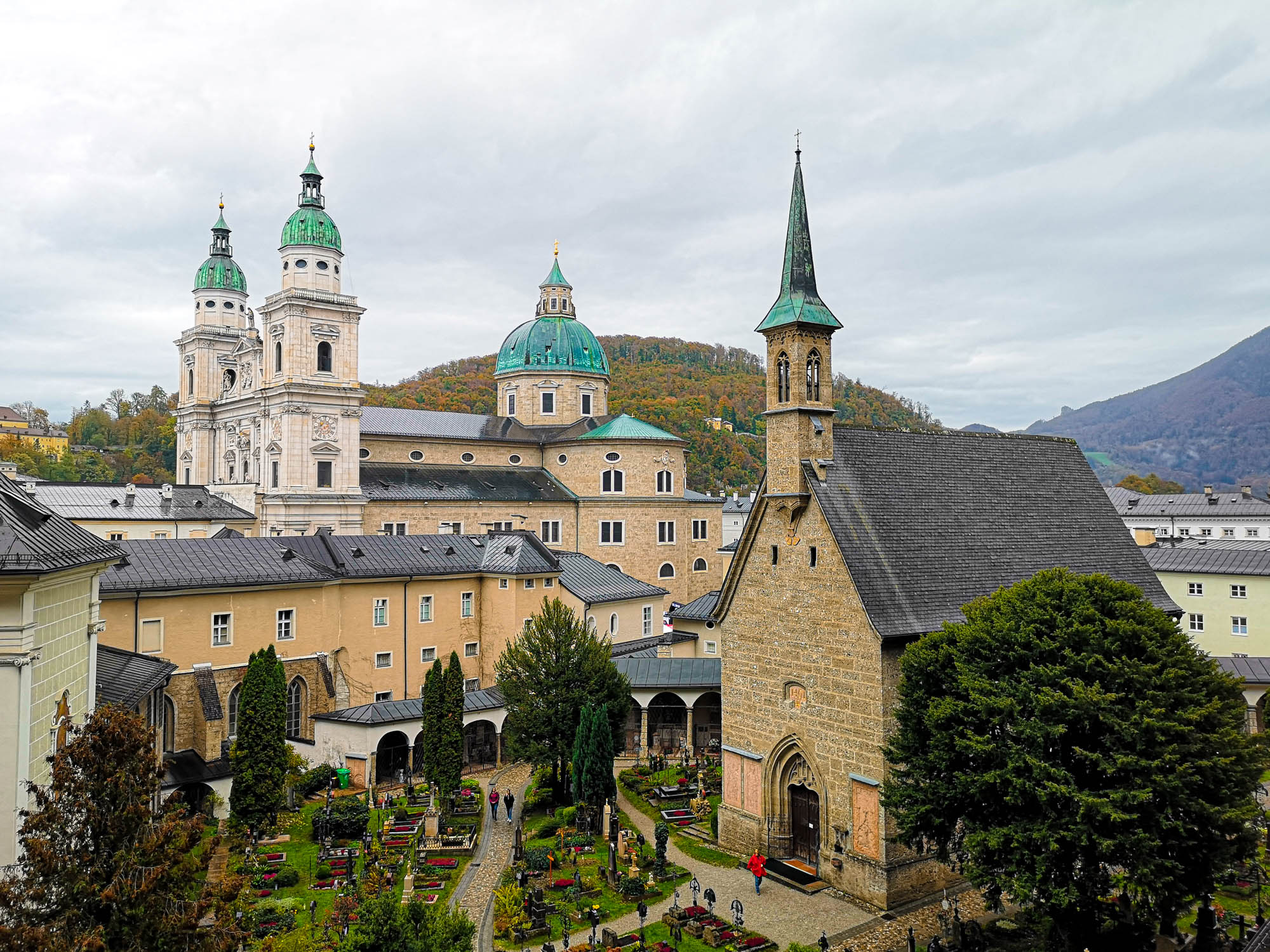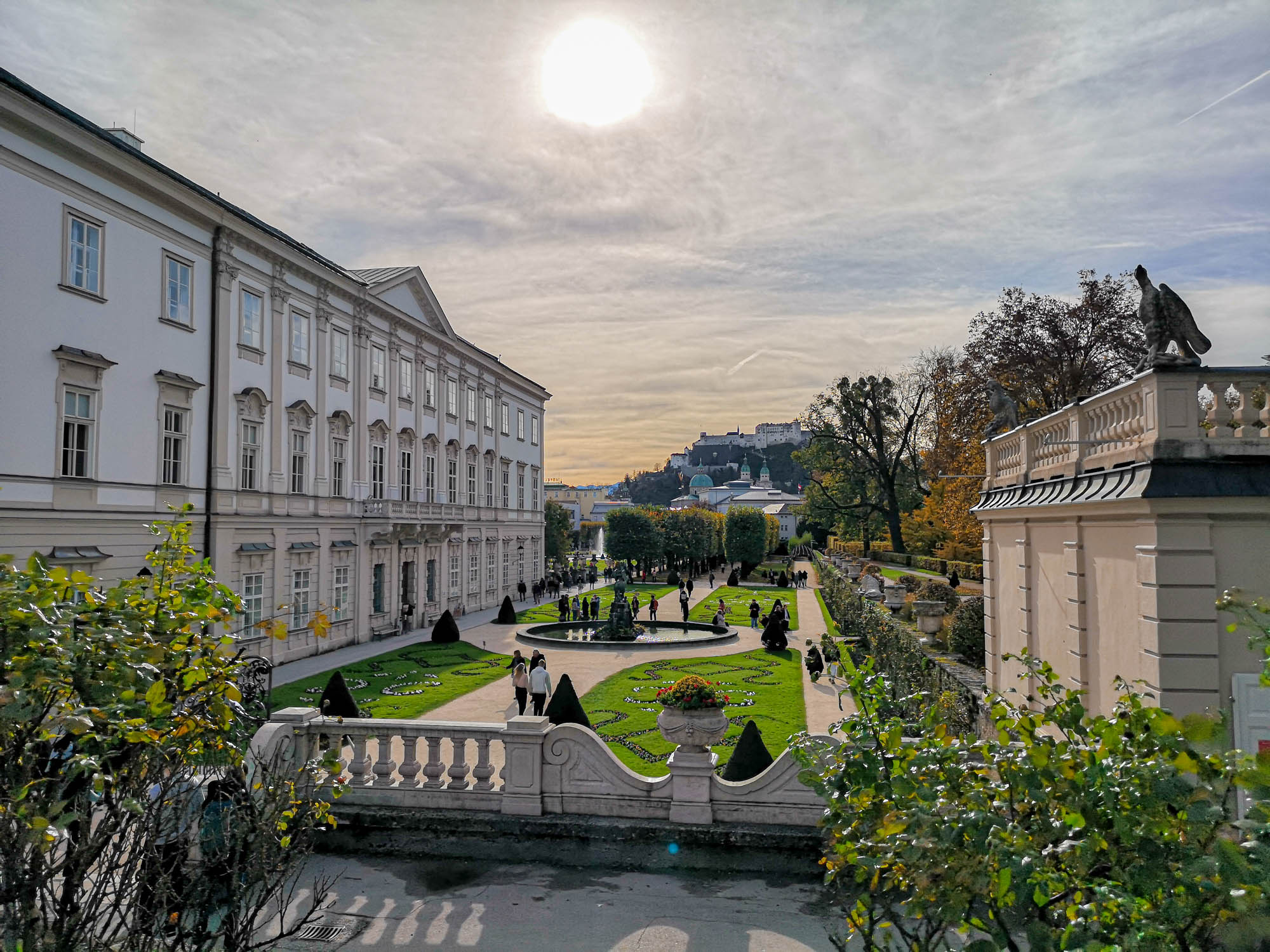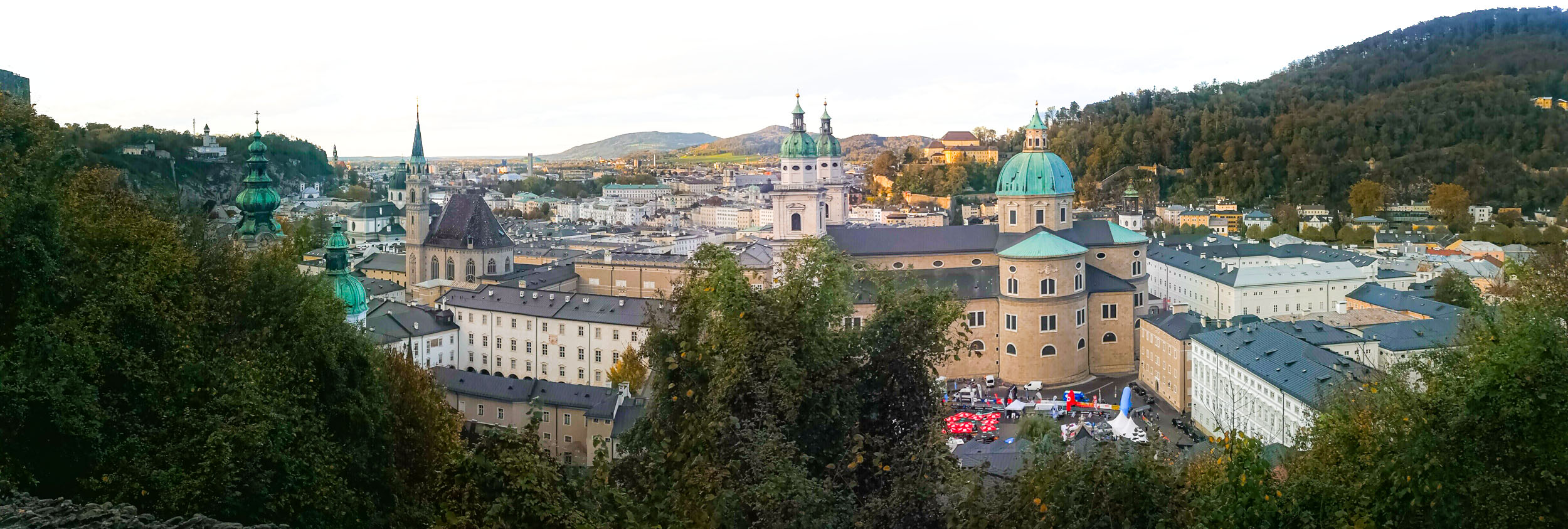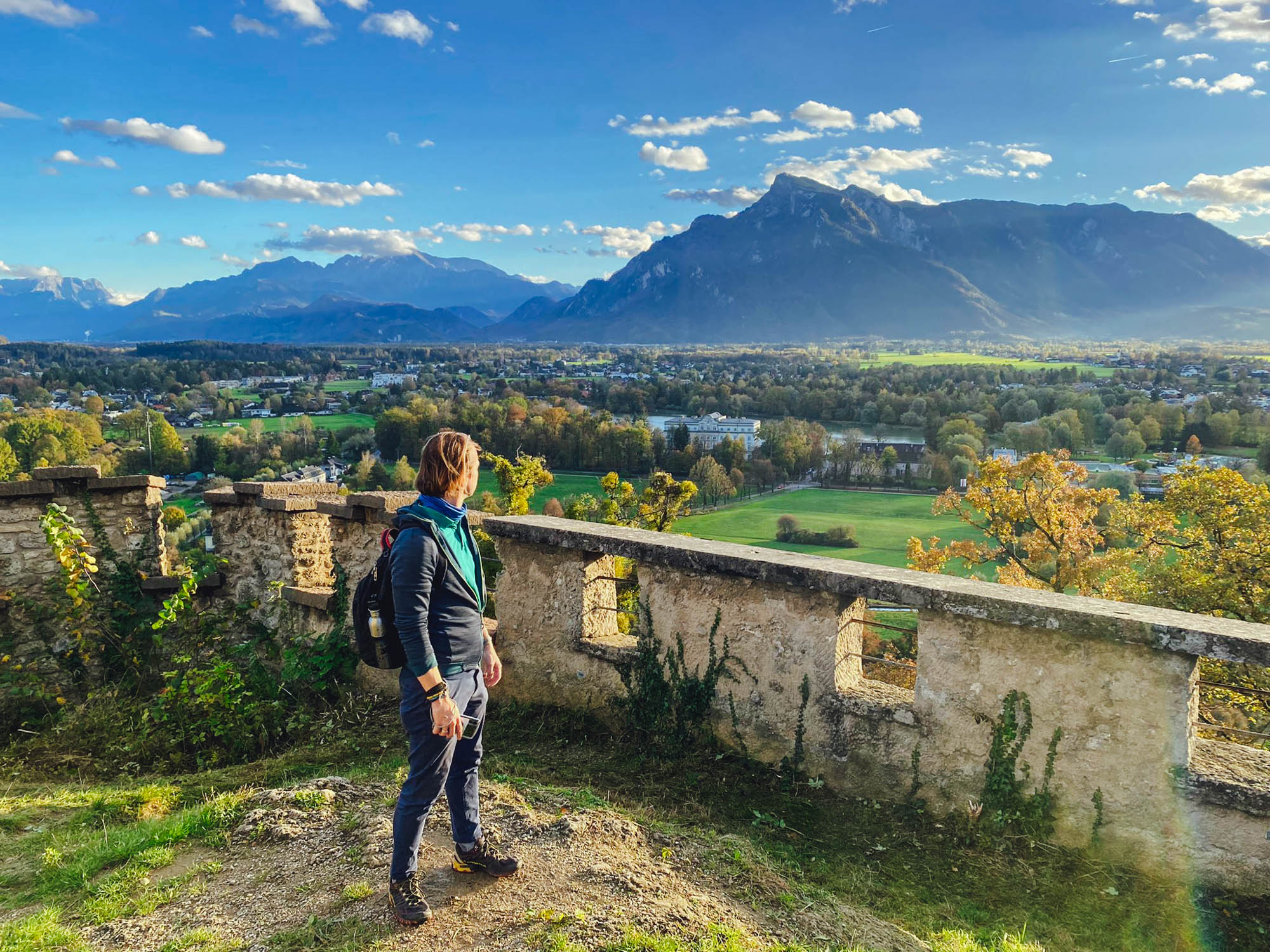November 8, 2022
Best Things to do in Salzburg, Day Trips Alps & History
Active life, Architecture, City, Culture, Guide, Hiking, History
Top attractions:
Quick Navigation
About Salzburg
Many have heard of the charming medieval city of Salzburg that rather looks straight out of a fairy tale. There is something about old German towns that makes you feel like a child again, and Salzburg comes at the top of the list of such places. As a result, tens of millions of tourists come each year to satisfy their curiosity. The authorities of Salzburg can hardly deal with such an influx of people but it is hard to blame them. Once you walk the old streets of the city yourself and embrace the majestic baroque architecture of Salzburg, you’ll understand why so many opt-in for the pilgrimage for appreciation of its unspoken beauty.
Since its dawn, Salzburg always appeared to be a wanted trophy jewel on the crowns of the surrounding empires and kingdoms. Precisely for that reason, the city is situated right on the border between Austria and Germany. While the foundation of Salzburg is linked with the Bavarians, despite its difficult history Austria somehow managed to maintain the possession of this beautiful city through modern history and the price of it was the territory of current-day Germany right next to the west of Salzburg. But the origins of the iconic city date back much further into history.

The lovely skyline of Salzburg. Photo by Alis Monte [CC BY-SA 4.0], via Connecting the Dots
Brief History of Salzburg
The first record of human settlement in the area now known as Salzburg is from the Neolithic era when the area was settled by the Celtic people as a part of the Kingdom of Noricum. The first written record of the name “Salzburg” comes from an 8th-century biography of Saint Rupert, written by Virgil of Salzburg. In 699 AD, St. Rupert became the first Bishop of Salzburg after receiving the city as a gift from the Duke of Bavaria. More importantly, St. Rupert baptized the local Pagan hunters, this marked the beginning of the rise of Christian Salzburg and the ruling elites, known as Prince-Archbishops.
The city started to transform in the 12th century, the Babenberg family came to power and built the first castle on the site of the present-day Hohensalzburg Castle. It was only 17th and 18th century, when Salzburg was finally transformed into the fairy-tale-like city, we all know and live today, under the rule of the Prince-Archbishops. It became a center of art, culture, and learning. Despite its location, due to a clever and careful diplomacy the city manages to maintain neutrality during the Thirty Years’ War. Though later on, Salzburg became a center of counter-reformism and all protestants were expelled from the city. This movement is definitely to blame for the exceptional Baroque architecture found across Salzburg. As we know, the Roman Catholics have used beautiful architecture to show off the benefits of this branch of Christianity.

Under every corner of a street in Salzburg lies a surprise. Photo by Alis Monte [CC BY-SA 4.0], via Connecting the Dots
Modern History of Salzburg
Salzburg was finally secularized in the 18th century when the city was occupied by the French army during the Napoleonic Wars. After the shock of Europe, inflicted by the great commander, Salzburg was incorporated into a newly formed Austrian Empire. Bavarians were not happy about the outcome and the annexation of the city followed in 1810. 5 years later, Salzburg was returned to Austrians under the Treaty of Munich but some areas of Salzburgerland remained under the control of Bavaria. These events were the blueprint for the current border between Germany and Austria.
In the 20th century, the city was the site of several important events, including the first Salzburg Festival in 1920 and the Congress of Vienna in 1815. Salzburg was annexed by Nazi Germany in 1938 and became part of the German province of Austria. At the end of the war, Salzburg had to take some heavy punches from the air by the Allies. 46% percent of the city, including the dome of the cathedral and bridges, were destroyed after the bombardment. Salzburg and its beautiful Baroque architecture were only saved by Colonel Hans Lepperdinger who gave up the city without fighting. On May 5 1945 the U.S. troops entered Salzburg and the city became the American base in Austria. It wouldn’t surprise me, that for this reason Salzburg was picked as the location for the legendary “Sound of Music”, which was a big part of the resurrection of the city.

Mirabell Palace is one of the most visited tourists attractions in Salzburg and one of the filming location of “The Sound of Music”. Photo by Alis Monte [CC BY-SA 4.0], via Connecting the Dots
Salzburg Details
- State: SalzburgerLand
- Coordinates: 47.8095° N, 13.0550° E
- Distance from Vienna: ±300km / 185mi
- Founded: 696 AD by St. Rupert
- First mentioned: 755 AD (Hecateus)
- Population: 156,872 (2020)
- Area: 65.65 km² / 25.35 mi²
- Elevation: 424 m / 1,391 ft
- Forecast: Salzburg weather
- Best time to visit: Spring – Early Summer
- Accommodation: Booking.com
Map of Salzburg

Due to its geographical location, Salzburg has plenty of beautiful vistas across the Old Town. Photo by Alis Monte [CC BY-SA 4.0], via Connecting the Dots
Hohensalzburg Fortress
The castle Hohensalzburg is the centerpiece of the fortification complex on the top of Festungsberg – one of the two iconic mountains of Salzburg separated by River Salzach. The castle is almost a millennia-old making it one of the oldest buildings in the city. The construction of Hohensalzburg began during the 11th century as the epicenter to secure the increasing power and ambitions of the Prince-Archbishops of Salzburg. During the following decades and centuries, the Old Town of Salzburg emerged around the castle. Therefore, it can be easily reached on foot from the city center, or by over a century-old funicular. Of course, it was modernized many times since its dawn but the first iteration of the funicular was built as far as in 1892.

Hohensalzburg is one of the biggest medieval castles in Europe. Photo by Alis Monte [CC BY-SA 4.0], via Connecting the Dots
Naturally, it is one of the symbols of the city and the unmissable part of the world-famous Baroque skyline. It is impossible to miss the castle because Hohensalzburg is one of the biggest medieval castles in Europe. It catches the eye of many visitors, especially those living in other continents. While it is impossible to see such castles outside Europe and Disney World, the appreciation for fairy-tale-like beauty is universal.
But Hohensalzburg isn’t only known for its look and magical aura but for great vistas and multiple museums. Would you’ve guessed that the castle houses 5 different museums and offers a panorama tour in one of its towers? I bet not. The list of museums includes The Prince’s Chambers with Magic Theater, The Armoury, The Rainer Regiment Museum, The Puppet Museum, and my favorite – The Castle Museum, probably the best place to learn about the history of Salzburg. As you can see there are a lot of awesome things to do in Hohensalzburg for just a single ticket.

The beauty of the gardens of Mirabell Palace out-stand the beauty of the palace itself. Photo by Alis Monte [CC BY-SA 4.0], via Connecting the Dots
Mirabell Palace
The Mirabell Palace (German: Schloss Mirabell) is the Schönbrunn and Versailles of Salzburg. Its gardens are often named one of the most beautiful Baroque gardens in Europe. So much so that the palace is often overshadowed by colorful gardens, furnished with a huge number of flowers, fountains, and sculptures. The best part of it is, of course, its size. Mirabell Palace Gardens are somehow compressed into a relatively small area, making it possible to explore all of its wonders in a fairly reasonable time. Naturally, the whole complex is noted as an important part of the Historic Centre of the City of Salzburg UNESCO World Heritage Site.

The grass is always greener in Mirabell palace. Photo by Alis Monte [CC BY-SA 4.0], via Connecting the Dots
The palace was built about 1606 on the shore of the Salzach river north of the city walls. Archbishop Wolf Dietrich von Raitenau had the palace built for his mistress Salome Alt. It was rebuilt in a lavish Baroque style from 1721 to 1723. Since 1866 the palace took a much more boring role of the seat of the Salzburg city administration. Today, the ground floor of the palace houses a number of shops and the Salzburg Marionette Theatre. The first floor belongs to the city hall, and the second floor serves as an event location and rooms for the city archives. Mirabel Palace is also a great place to listen to the classical concert of Wolfgang Amadeus Mozart’s music. While some parts of the palace itself are closed off to the public or require a certain ticket, the most popular and beautiful part of it, the gardens of Mirabell Palace, are open and free to everyone.

At a certain angle, you can put the golden crown over Mary in DomQuartier Salzburg. Photo by Alis Monte [CC BY-SA 4.0], via Connecting the Dots
Salzburg Cathedral
The Salzburg Cathedral is the trademark of the city. The magnificent church is located in the middle of the old town and was built in the 11th century at a similar time as Hohensalzburg. Unfortunately, its dome was hit by the bombardment of Allied forces during the Second World War, thus Salzburg Cathedral had to be renovated. Nevertheless, a very good job was done in restoring what was once lost and Salzburg Cathedral doesn’t feel like a modern church at all. Quite the contrary, it is often called a picture book due to the large number of fresques across the interior of the cathedral. It is a true masterpiece of combined arts.
The design of the stunning Salzburg Cathedral came from the Baroque times, replacing the earlier Romanesque cathedral. Despite all the reconstructions and renovations, the current chapel originates from the dawn of the church in the early 11th century. Understandably, it is the oldest part of the Cathedral. The magnificent exterior of Salzburg Cathedral is made of white and pink marble, which contrasts very well with the striking blue sky.

The interior of Salzburg Cathedral. Photo by Alis Monte [CC BY-SA 4.0], via Connecting the Dots
The interior of the Salzburg Cathedral is equally as stunning. You will find a wide range of tombs and sculptures of famous individuals, as well as stunning stained glass windows and impressive organs. Among the interesting artifacts from the past is the baptism fountain (Ger. Taufbecken) from 1321 created by Master Heinrich. It lies on four romanesque lions, who date as far as to 12th century, but the age of the artifact is not the only interesting thing about it. As it is recorded in the cathedral’s records, Joannes Chrysostomus Wolfgangus Theophilus Mozart was baptized here, the favorite son of Salzburg.
Pro tip: If you time your visit to Salzburg Cathedral correctly, there is a possibility to hear the multiple organs in play. Salzburg Cathedral concerts happen every day at midday.

Residenzbrunnen is the biggest baroque fountain outside Italy and it was also featured in “The Sound of Music” during the “I have confidence” musical scene. Photo by Alis Monte [CC BY-SA 4.0], via Connecting the Dots
Sound of Music Tour
Like many historical things in Salzburg, the relationship between Austria and Germany is also a centerpiece of probably the most popular thing coming out of the magical city in modern times – the musical “The Sound of Music”. Filmed in Salzburg and the surrounding areas of SalzburgerLand, this masterpiece is not only a widely acknowledged classic of musicals but was a huge blockbuster at the time of its release. With inflation taken into the account, “The Sound of Music” is one of the most profitable movies of all time. That, of course, produced hordes of fans through the following decades, therefore Sound of Music Tour is one of the most popular things to do in Salzburg. In the movie, the city embodies the pure and idyllic nature of Austrian provinces which are slowly consumed by the politics coming from Vienna and Germany.
Due to the nature of the musical, visiting the famous scenes from the movie is a great way to get an idea of what Salzburg and SalzburgerLand state are all about. The Sound of Music Tour will bring you to iconic places within the city like Schloss Leopoldskron, Hellbrunn Gardens, Mirabelle Palace, and Nonnberg Abbey. You also get to see some of the best that the Lake District of SalzburgerLand has to offer: Mondsee, the place of the wedding, and St. Gilgen, which was used for the intro scenes of the movie. All of this is followed by the amazing music of “The Sound of Music” and a great mood!

Leopokdskron Castle in front of Untersberg, the source of salt mines on both German and Austrian sides. Photo by Alis Monte [CC BY-SA 4.0], via Connecting the Dots
Salt Mines of Salzburg
Over millennia, the salt mines around the city were the raison d’etre of Salzburg. Before the invention of the fridge and other means to preserve food, some say that at some time salt had the value of gold. This is a myth of course but the fact that it exists proves that salt was appreciated much more back in the past. What is a fact, that salt mining monopolies were held even by force if necessary.
In that sense, the salt mines around Salzburg were a gold mine and Bavarians wanted a piece of it. As a compromise, Bavarians and Austrians split the salt mines by dividing Mount Untersberg between the countries. Austria remained in the possession of Hallein Salt mines on the eastern side of the mountain, while Bavaria obtained the Berchtesgaden Salt Mines and the area around them. Today, they don’t bring as much wealth in a traditional way to the countries as they used to, but many people are curious to visit them and tourism is blooming.

There are many sculptures and pieces of Mozart’s life scattered throughout the city. Photo by Alis Monte [CC BY-SA 4.0], via Connecting the Dots
Mozart Concert & Heritage
Salzburg is also known as the birthplace of the renowned composer Wolfgang Amadeus Mozart. Locally, the great Austrian composer is often referred to as the most famous son of Salzburg. Throughout the city, you’ll find various historical landmarks related to his life in Salzburg. They are accompanied by countless souvenirs, legendary Mozartkugels, and extreme over-tourism. Not entirely my cup of tea but it is very popular nevertheless. I find all of this rather unimportant compared to his music. If you want to get in touch with the legacy of this legendary Austrian composer, I suggest the classical Mozart concert instead.
If you are not a great music fan and insist on visiting these historical landmarks I suggest visiting Mozart Museum, Mozartplatz, and even the off-the-beaten-path sculpture on Kapuzinerberg, but keep yourself from the birthplace of Mozart. It is a very overrated house in a shopping street with a local supermarket on the first floor. I can’t understand why people find this place so fascinating when Mozart’s grave in St Marx Cemetary in Vienna seems to be rather unnoticed. One way or another, if you really want to learn about the details of the life of this genius, I suggest booking a tour in advance. Surprise surprise, they are very popular as well.

St Peter Church is by far the most beautiful Church in Salzburg. Photo by Alis Monte [CC BY-SA 4.0], via Connecting the Dots
More Things to Do in Salzburg
- Ascend Eagle’s Nest and visit Berchtesgaden – A skip-the-line ticket, transfer and tour to the Bavarian Alps idyllic town.
- Visit the Hallstatt – Visit one of the most popular tourist destinations in Austria.
- Explore the Old Town of Salzburg – If you are afraid to get lost in the medieval streets or want a deeper insight into the idyllic Old Town of Salzburg, you can book a tour.
- Visit DomQuartier – A good place to learn Abou the history of Salzburg and a perfect thing to do on rainy days.
- Visit St Rupert’s Grave in St Peter’s Church – In my opinion is by far the most interesting and beautiful Church in Salzburg.
- Hop on the city bus tour – A quick and simple way to see the most famous landmarks and learn about Salzburg and its history.

Salzach is the central piece and origins of Salzburg. Photo by Alis Monte [CC BY-SA 4.0], via Connecting the Dots
How to get to Salzburg
Salzburg is located on the crossroads between Vienna and Innsbruck and between Munich and Villach. It is very well connected either by trains or motorway. I’m sure, there will be no problem reaching Salzburg.
By Train
ÖBB offers countless options for train connections between the two most visited cities in Austria: Vienna and Salzburg. The fastest one takes just 2h20 and the ticket price gets cheaper if you book in advance the Sparschiene Ticket.
As an alternative, Westbahn offers a relatively cheap and fast transfer service. There is a train leaving Vienna Westbahnhof every 20 minutes during the peak hours. It is often a cheaper and faster option if you plan your trip short-term.
Pro tip: Salzburg City Card provide free public transport within the city limits and free entrance to various museums in Salzburg!
By Car
It couldn’t be more simple than this. From Vienna just exit north to the A1 motorway, which will lead you straight to Salzburg.
By Transfer
- From Munich: Private Day Trip to Salzburg – (8h00 | from € 704.30/person). The price covers a full-day trip with a comfortable car transfer service to and from your accommodation in Munich and a guided tour in English, French, German, Italian, Russian, or Spanish language.
- From Salzburg Airport: Transfer to/from Salzburg – (0h30 | from € 80.00/group up to 7). The price covers a transfer from Salzburg Airport to your hotel or vice versa, so you could relax on your visit to the glamourous city.
- From Vienna: Melk, Hallstatt & Salzburg Day Trip – (0h30 | from € 1,080.50/person). The price covers pick-up and drop-off from your accommodation in Vienna, Melk Abbey entrance tickets & a 1-hour tour, a 2-hour tour in Salzburg, and a table reservation in a local Hallstatt restaurant. The day trip is accompanied by English and German speaking driver. See everything the best that Austria has to offer in just one day!
The private transfer options are managed by GetYourGuide – Probably the best-curated tours platform out there. GetYourGuide guarantees the quality of the provided services and free cancellation up to 24 hours before the tour for a full refund.

At Richterhöhe Viewpoint, Salzburg. Photo by A.L. [CC BY-SA 4.0], via Connecting the Dots
Personal Experience
Having spent quite a lot of time traveling in Austria, I wasn’t expecting much from Salzburg. I always imagined the city being the Capital of Zell am Sees and Hallstatt. Of course, in some sense it is true but Salzburg somehow managed to seduce me despite my false prejudice. I think the most important reasons for that were the friendliness of the local people and the unique aura of the city. To my surprise, Salzburg somehow manages to pull off a different feeling to itself compared to two Austrian polarities: Vienna and Innsbruck.
Salzburg is a must-visit for anyone who can afford it. The surrounding region, Salzburgerland, makes the city a viable option for any amount of days, as it is a great hub to explore the magical region around Salzburg. Though have in mind that smaller tows might be a cheaper option to do so. 2 to 3 days should be enough to make a good impression of the city, but if a day trip is all you can get, don’t miss it either. The unique aura of overwhelmingly white and black baroque architecture covered by green church-bell towers is something impossible not to fall in love with. A simple couple of hours of walk in the Old Town could be enough to leave a very strong impression on the city. Salzburg is simply lovely.

All content and photos by Alis Monte, unless stated differently. If you want to collaborate, contact me on info@ctdots.eu Photo by Alis Monte [CC BY-SA 4.0], via Connecting the Dots